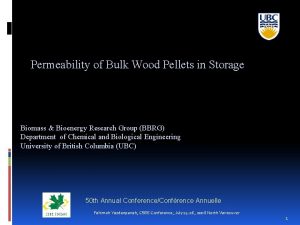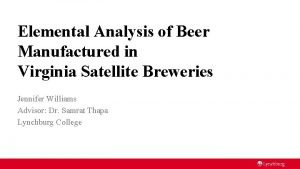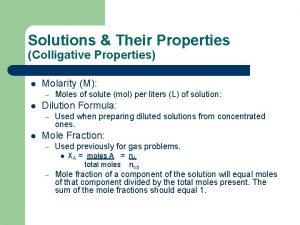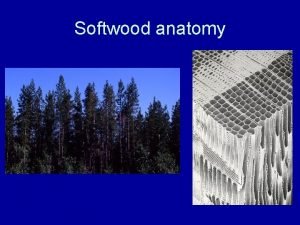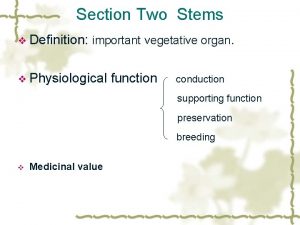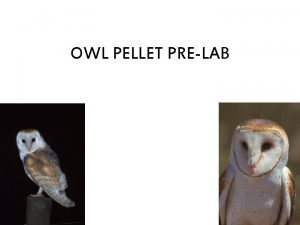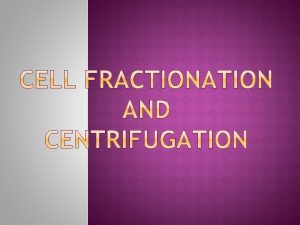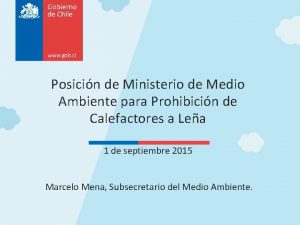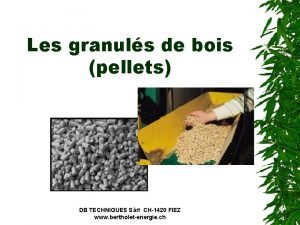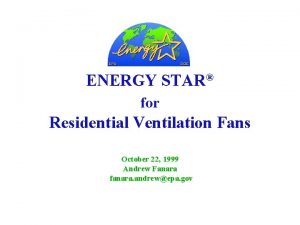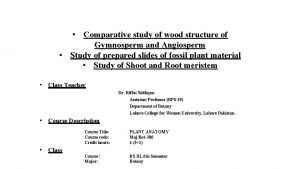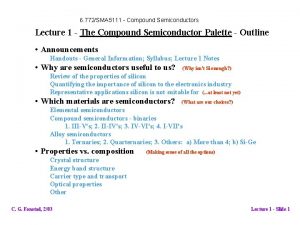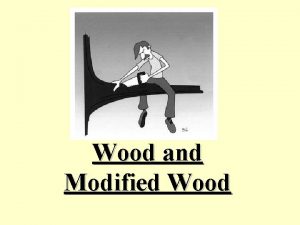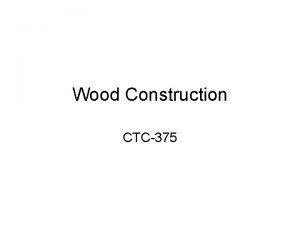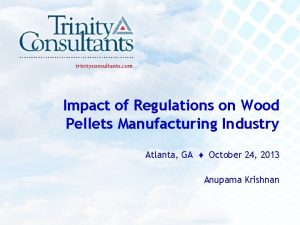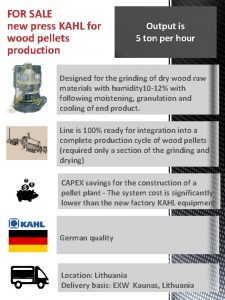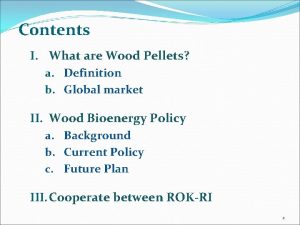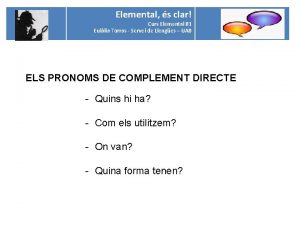Residential Wood Pellets Elemental Composition Market Analysis and


















- Slides: 18

Residential Wood Pellets: Elemental Composition, Market Analysis and Policy Implications Lisa Rector, NESCAUM George Allen, NESCAUM Dr. Phillip Hopke, Clarkson University Sriraam Ramanathan Chandrasekaran, Clarkson University NSPS Educational Forum Minneapolis, MN November 8, 2012

Background • Greater push to use biomass fuels as an alternative to fossil fuels • Limited information on components of wood pellet fuels • Examine the efficacy of existing standards? • Understanding composition is important – – enhance knowledge of potential air pollution public health impact efficiency benefits and trade-offs potential solid waste issues 2

Background • Quantify wood pellet fuel chemical composition for fuels manufactured or available in New York State • Assess variability of composition across/within brands • Identify policy relevant strategies to reduce or control impacts from air emissions and/or solid waste • Provide input into pending EPA NSPS regulation Residential Wood Heater Source Performance Standard (NSPS) 3

Pellet Market • U. S. has no regulatory pellet fuel standard • Pellet Fuel Institute (PFI) has voluntary standards • All pellets found in retail outlets labeled as “Premium” wood pellets 4

Sample Collection/Prep • 132 40# bags obtained during winter 2010 -11 in 5 NE States • ~ 100 different brands (rest: duplicates purchased independently) • 4 categories of analysis: – Basic characterization (ASTM “proximate analysis”) calorific value, moisture content, ash content – Ions: sulfate and chlorine by IC – Trace metals by ICP-MS – Mercury - gold trap followed by CVAA analysis 5

Analysis • What is “normal” for ions and metals pellet analysis? – No accepted standards (ash or wood) at this time – No SRM or similar reference material for wood/ash analysis • Sample screening for “normal” values to estimate working “benchmark” concentration for ash analysis – Use 95 th percentile of normals as preliminary “benchmark” limit – 85 out of 132 samples considered “normal” (64%) based on screening of all analytes – Remainder, 47 samples, had outlier results – 20 samples (15%) elements of concern (metals, mercury) 6

“Normal” Pellets • Typically, the pellets identified as normal looked like wood 7

Pellet Analysis • This pellet exhibited high levels of: – – – Chromium Copper Arsenic Lead Mercury 8

Pellet Analysis • This pellet almost black – Color could be a result of processing or of addition of black liquor • 8% ash - PFI ash limit: 1% for “premium grade” pellets. 9

10

PFI Standards Analysis – Normal Samples 11

PFI Standards Analysis – All Samples 12

13

14


16

Potential Sources of Elevated Elements • Harvesting/processing practices • Uptake from soluble sources • Wood species • Inclusion of bark • Use of waste wood 17

Initial Conclusions • PFI standards are not likely to identify contamination in pellets since primary focus is on physical properties • Appropriate methods for analysis are critical in identifying elemental constituents • Need to gain a better understanding what contributes to variability in pellets and minimize sources of contamination • Impact of elevated elements for local exposures • Significant policy issues remain 18
 Indeck energy wood pellets
Indeck energy wood pellets Bulk wood pellets saskatchewan
Bulk wood pellets saskatchewan Elemental analysis of beer
Elemental analysis of beer Molarity and molality are colligative properties.
Molarity and molality are colligative properties. Longitudinal tracheids
Longitudinal tracheids V
V Market segmentation lesson
Market segmentation lesson Sotto pellet
Sotto pellet Dirty jobs owl pellets
Dirty jobs owl pellets Pellets from russia
Pellets from russia Centrifugation theory
Centrifugation theory Estan permitidas las estufas a pellets en santiago
Estan permitidas las estufas a pellets en santiago Db pellets
Db pellets Residential ventilation fans market
Residential ventilation fans market Comparative wood anatomy
Comparative wood anatomy Esau wood poem
Esau wood poem Wood wood teenager
Wood wood teenager Leader challenger follower
Leader challenger follower Quarternaries
Quarternaries

